Search
Summary 
Loading AI-generated summary based on World History Encyclopedia articles ...
Search Results
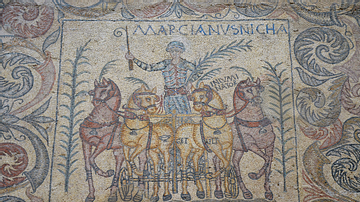
Article
Chariot Racing in Ancient Rome
Chariot racing was very big business in ancient Rome. There was a whole industry built around the factions, the four professional stables known by their team colour – Blue, Green, Red, and White –, providing all that was required for a race...
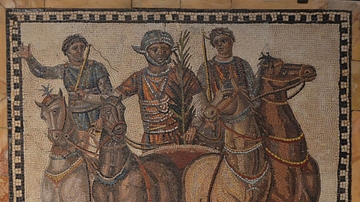
Image
Mosaic with Chariot-Racing Scene
Roman mosaic depicting a quadriga of the factio russata (‘the Reds,’ representing the summer), 3rd century CE, from Rome.
National Archaeological Museum of Spain, Madrid.
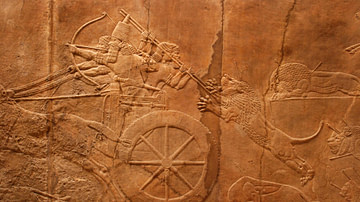
Definition
Chariot
The chariot was a light vehicle, usually on two wheels, drawn by one or more horses, often carrying two standing persons, a driver and a fighter using bow-and-arrow or javelins. The chariot was the supreme military weapon in Eurasia roughly...
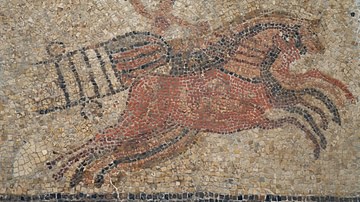
Image
Mosaic with Quadriga Racing Vigorously
Fragment of a mosaic with a circus scene and a quadriga (chariot led by a four-horse team) racing vigorously, found in Paradas, dated to the 4th century CE.
Museum of Archaeology, Seville.
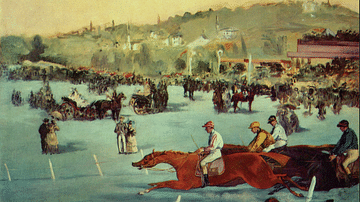
Image
Horse Racing by Manet
An 1872 oil on canvas painting, Horse Racing, by Edouard Manet (1832-83), the French modernist painter. The was a work commissioned by a racing enthusiast. Manet was a frequent race-goer himself, particularly the races held at the Bois de...

Article
Roman Games, Chariot Races & Spectacle
If there was one thing the Roman people loved it was spectacle and the opportunity of escapism offered by weird and wonderful public shows which assaulted the senses and ratcheted up the emotions. Roman rulers knew this well and so to increase...
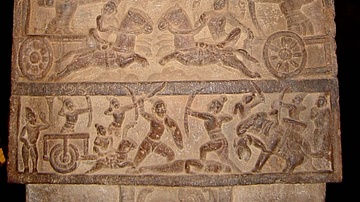
Article
Chariots in Ancient Indian Warfare
The chariot was the elite arm of ancient Indian armies in the Vedic (1500 BCE – 1000 BCE) and Epic periods (described by the Ramayana and the Mahabharata, 1000-600 BCE) because of the advantages it conferred and the selection of plain ground...

Definition
Cynisca of Sparta
Cynisca of Sparta (b. c. 440 BCE) was a Spartan royal princess who became the first female Olympic champion. Defying the traditional role of women in ancient Greece, she competed in the Olympic Games alongside the men and won. Her triumph...
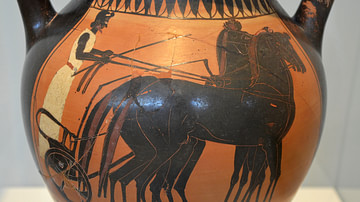
Image Gallery
21 Images of Greek and Roman Charioteers
This gallery features images of Greek and Roman chariot racers. Chariot racing was the most popular spectator sport in ancient times. In Greece, chariot racing was important in aristocratic funeral games from an early period. As formal races...
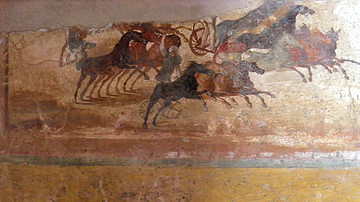
Image
Chariot Race from Pompeii
Roman wall painting depicting a chariot race, from Pompeii, Casa delle Quadrighe (House of the Chariot Race), dated to 68-79 CE.
Naples Archaeological Museum.